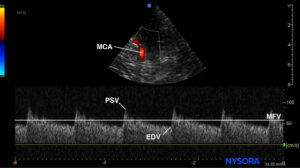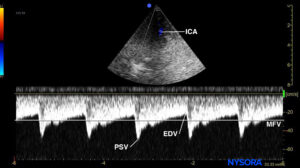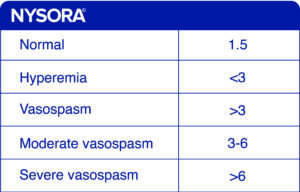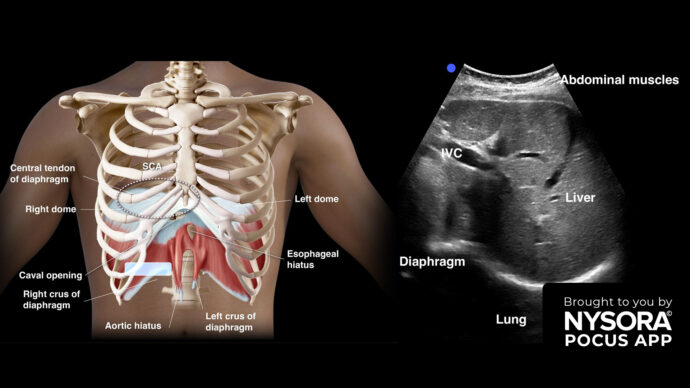
Assessing Cerebral Vasospasm with Transcranial Doppler: A Step-by-Step Guide
Cerebral vasospasm is usually caused by subarachnoid hemorrhage (SAH) due to the exposure of the vessels to extravascular blood. For SAH patients, daily transcranial Doppler assessments are recommended starting from day 3 to 5. However, the highest incidence of vasospasm usually occurs around 8 days after the initial bleed.
Follow these steps to assess and determine the severity of cerebral vasospasm using pulsed wave Doppler:
- Measure the flow velocities in the middle cerebral artery (MCA).

Mesencephalic plane pulsed wave Doppler with the Doppler gate on the MCA. MCA, middle cerebral artery; PSV, peak systolic velocity; EDV, end-diastolic velocity; MFV, mean flow velocity.
2. Measure the flow velocities in the internal carotid artery (ICA).

Pulsed wave Doppler of the flow in the (terminal extracranial) ICA. ICA, internal carotid artery; PSV, peak systolic velocity; EDV, end-diastolic velocity; MFV, mean flow velocity.
3. Calculate the Lindegaard ratio to determine the severity of the vasospasm.
Lindegaard ratio = Mean flow velocity MCA / mean flow velocity ICA

Mesencephalic plane pulsed wave Doppler with the Doppler gate on the MCA. MCA, middle cerebral artery; PSV, peak systolic velocity; EDV, end-diastolic velocity; MFV, mean flow velocity.
Perform daily follow-ups to track the ratios in at-risk patients. This helps to monitor the progression or regression of the condition over time.
Unleash the potential of POCUS with NYSORA’s POCUS App and elevate your practice, expand your capabilities, and deliver exceptional patient care. Download HERE.



